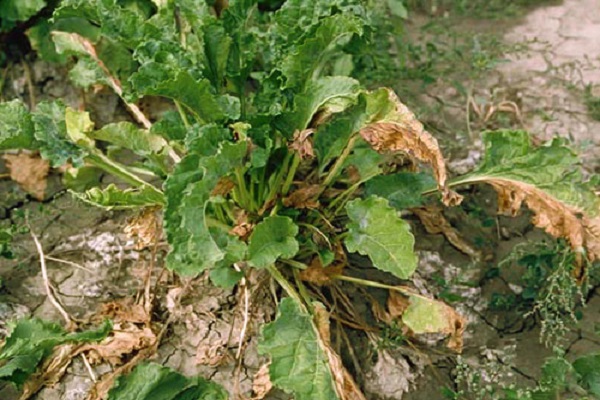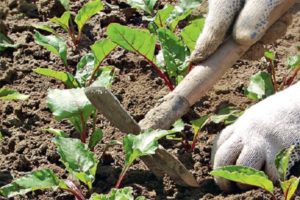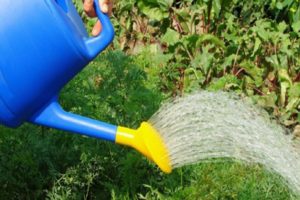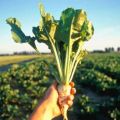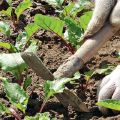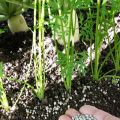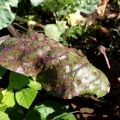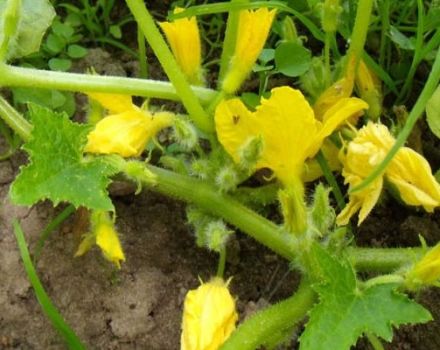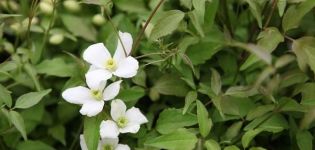Description of beet pests and the fight against them with folk remedies
Cultivation of table beets includes not only its feeding, watering and weeding, but also the fight against various insects that settle on the tops of this dicotyledonous herb and begin to feed on it. Some adult arthropods or their larvae live in the ground. They gnaw at the root of a vegetable of the subfamily of hawkers. As a result, the plant withers and dies.
Beet pests can destroy both young shoots and an adult plant with an already formed root crop, so the owners of the site should carefully examine the beds with crops and destroy dangerous insects in a timely manner.

Beet pests and control
There are several dozen different arthropods that can harm the haze. These are worms, aphids, beetles, bugs, flies, moths, as well as their caterpillars and larvae. The danger of many pests is that they multiply quickly, and their colony eats leaves and roots in the garden in a short time. Untimely noticed by the owners of the dacha or vegetable garden, insects can destroy the entire crop or most of it.
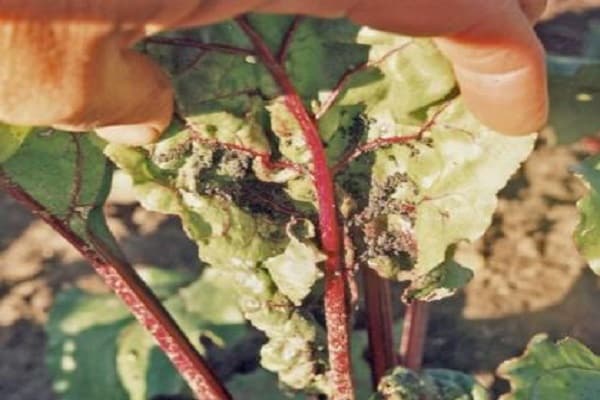
People are fighting arthropods using the entire arsenal of available methods. They use not only chemical insecticides, but also folk remedies. For large beetles, they arrange traps from scrap materials, small ones are washed off the sheets with a stream of water. Wood ash is used and weeds are promptly removed, on which pests are often found, which later move to neighboring useful plants.
Knowing the distinguishing features of dangerous insects, the time of their appearance and effective ways to get rid of them, you can save root crops in the garden and get a good and healthy harvest.
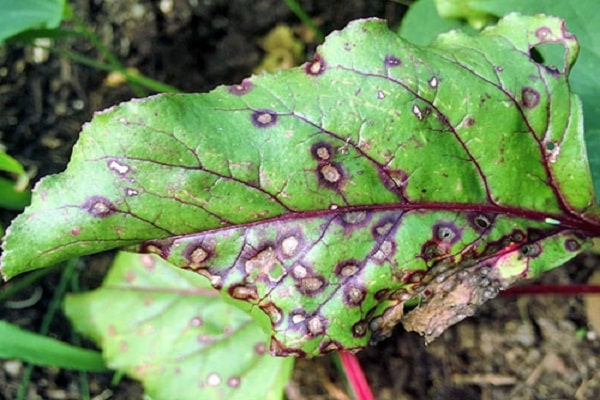
Beetles
Beetles such as beet weevil (beetroot) and fleas are the main pests of beets, and they are being fought in all corners of Russia.
The weevil is a gray-brown insect up to 13-14 mm long, its scaly body is covered with fine hairs. A distinctive feature, by which it is easy to recognize the beetroot, is its front part of the head extended into a tube. Beetles hibernate in the soil and come out in early spring. They are dangerous for plant sprouting, as they eat up the cotyledons and bite off the sprouts.
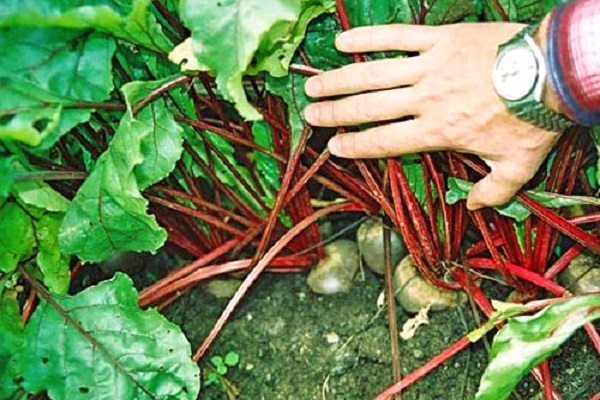
These insects love the swan, which also belongs to the Hibiscus subfamily. In those areas where it grows, weevils have enough food, so they multiply more. When several pairs of leaves appear on the seedlings (in the second half of May), each female lays 60-100 eggs in the ground, from which larvae hatch a week later. They feed on the roots of the plant, gnawing passages in them. This spoils the appearance of root crops, causes wilting and yellowing of the tops.Adult weevils gnaw the petioles and edges of the leaves, eat the bracts.
A popular measure to combat beetles is to enclose a beet bed with small grooves with sheer walls. If the weevil finds itself in a ditch, it cannot get out of there. Trapped insects are collected and destroyed or sprayed on site with Decis. In the summer, you should pull the swan out of the ground in time, until its seeds fall on the ground, then next year there will be less food on the site for beetles and their population will decrease.
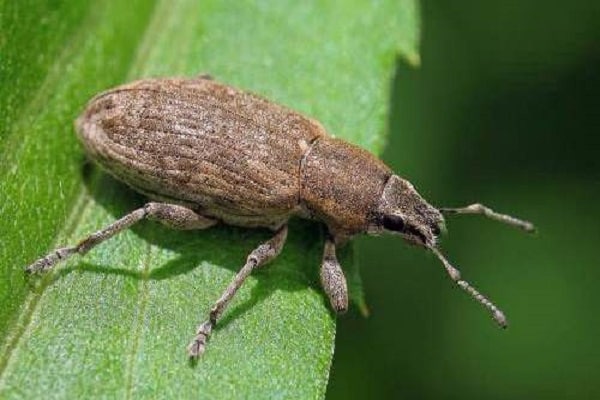
Beet fleas are tiny insects up to 2.3 mm in length covered with dark green chitin. They fly from their wintering grounds to vegetable gardens in April and first eat the weeds. When the haze sprout, the flea feeds on cotyledons and leaves. Traces of its activity are through holes or holes gnawed in the pulp. The tops then turn yellow and curl. Often, in addition to the leaves, the beetle also eats the growing point, destroying seedlings at an early stage of life.
In May, fleas lay their eggs shallowly underground, and after 2 weeks, larvae emerge from them. They feed on beetroot roots for a whole month, but do not cause much damage to them, and then pupate. By August, young fleas emerge from the pupae and eat the tops of the plant; soon they fly away for the winter, where they eat weeds.

To save the planting, you need to treat the beets from pests with wood ash mixed with tobacco dust (1: 1 ratio). This should be done until the temperature outside has exceeded + 18 ... + 19 ° C, since in warm weather fleas begin to multiply. Young shoots and leaves of haze are sprinkled with wood-tobacco composition, and after 5 days the procedure is repeated.
Infusions of wormwood or marigolds, which are watered on beet sprouts, help to fight small bugs. The pungent smell scares away insects, and they jump to other places. If the owners prefer to destroy flea bees with chemicals, then Kinfos and Imidor are suitable for this purpose.
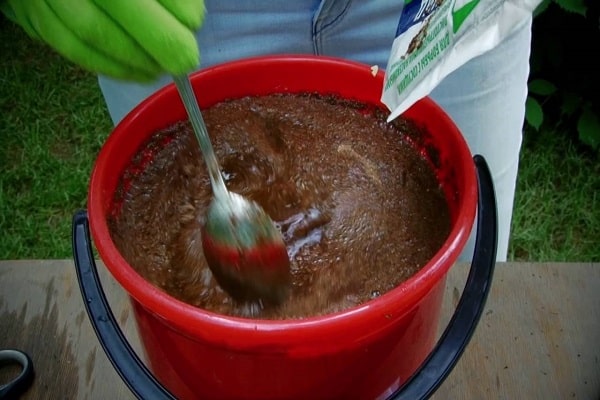
Medvedka
A big pest of vegetable gardens is a bear, or earth crayfish. Even 15-20 years ago, its description and image were found in the literature and people looked at the strange insect with curiosity. Now you can see a live bear on your or a neighbor's site. This Orthoptera is able to move through the air, and it also enters the gardens with manure, in which it likes to winter.
The insect reproduces rapidly. One female can lay up to 500 eggs in the soil. The larvae emerge from them after 3 weeks, their formation into adults takes 2 years.
Earth crayfish reaches a length of 5, rarely 6-8 cm. Above its head is a shell, which serves as a protection for the insect. Of the three pairs of limbs, the first is the most unusual. Wide and powerful, mole-like paws are designed for digging soil. Thanks to them, the bear digs long passages in the ground, along which it moves at high speed, looking for food for itself. This arthropod also lives underground in burrows, crawling out of there at night.
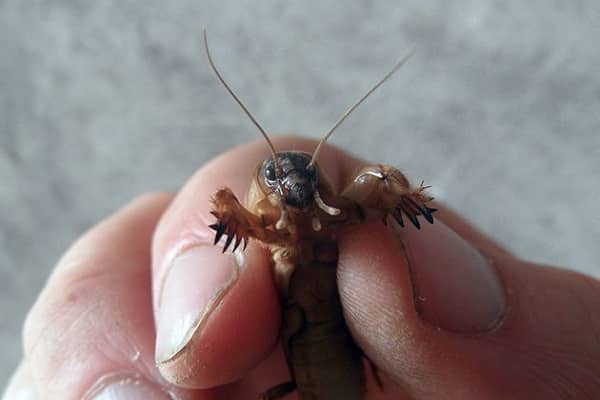
Large insects feed on various root crops, eating them from all sides. In the summer, they can also eat beet tops. Bears are most dangerous in spring, when they gnaw at young shoots at the very roots. Often earthen crayfish eat roots, without which the plantings wither and die.
People use many methods to combat these arthropods. Since the bears live underground, they are lured to the surface by pouring several liters of a solution of laundry soap or washing powder into each hole, and then destroying them by chopping off the body.
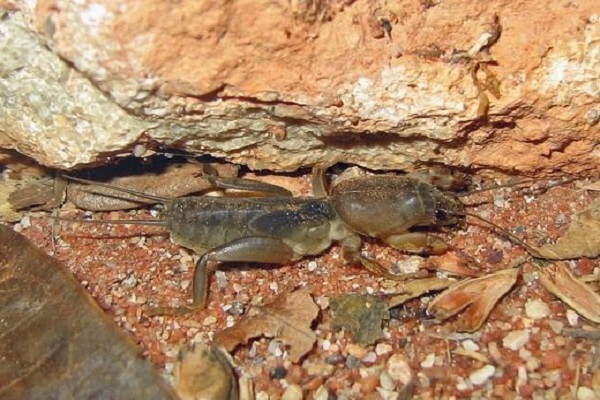
Traps with beer or honey water are widely used, as their smell attracts insects. A drink is poured into small bottles or cans, and the container is dug into the ground at an angle and the top is tied with a bandage.Bears gnaw through the fabric and make their way inside the bottles, but they cannot get out. More than a dozen individuals can be packed into one container.
In the fall, earthen crabs are fought with manure. In several places of the site (along the perimeter), small holes are dug, which are filled with compost. Insects crawl there for the winter. When frosts come, traps dig up and scatter manure around the garden. Bears do not have time to get into the ground and die from the cold.
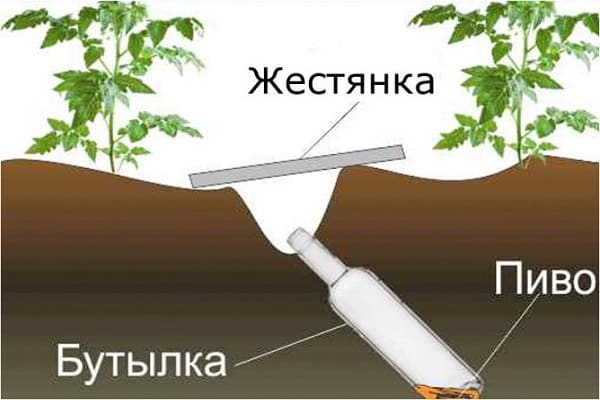
Nematode
In the soil of vegetable gardens, there can be many cysts - brown shells of dead females that have the shape of a lemon, in which eggs and larvae of roundworms are found. If beets grow next to the cysts, the larvae gnaw through the shell and, with the help of a thin thorn at the mouth, penetrate the root. They dissolve plant cells with their enzymes so that they can be absorbed more conveniently.
This affects the plant, which loses nutrients and develops more slowly: its leaves turn yellow and wither, many thin roots appear on the root crop (beard). Outwardly, a sick vegetable looks smaller than a healthy one.
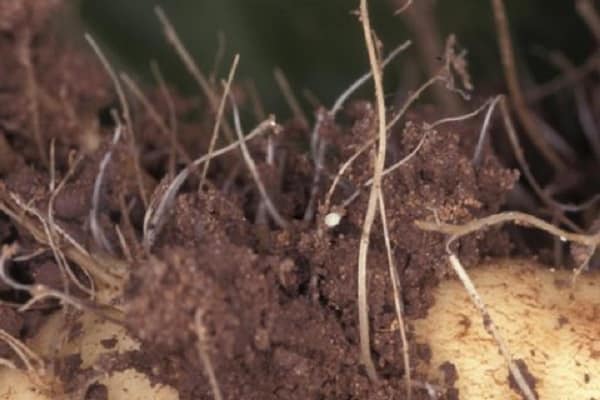
Adult males (transparent worms up to 1.3 mm in length) leave the plant and do not eat any more. They live in the soil for about a month, return to the females for fertilization, which, continuing to sit at the surface of the fetus and increasing, tear its shell with their backs. Females lay 300 eggs in an egg sac. Soon, adults of both sexes die, and the offspring remain in the cysts. Shells can be moved by wind and water across fields.
During the growing season, it is difficult to fight nematodes, therefore, a month before planting crops and after harvesting them, the soil is treated with nematicides. If the garden is affected by worms and their larvae, then under such conditions the cultivation of root crops will be ineffective. To disinfect a site, it will take 4 years to plant crops on it that are not affected by nematodes (wheat, clover, barley).
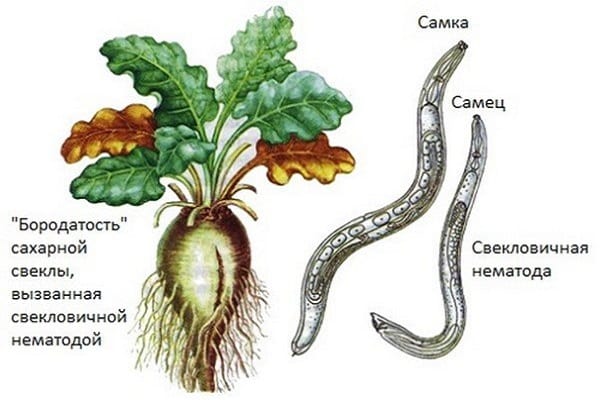
Beet fly
Small, up to 8 mm, gray beet flies are pests of sugar beets. In wet weather, they lay up to 100 white eggs under the bottom of the leaves. The larvae feed on the pulp of the tops, leaving the skin intact. The cavities inside swell and turn red. Soon, the leaves wither and die. Surviving plants produce fruits that are low in sugar.
To combat the fly, you should spray the haze with insecticides in advance. If this is not done, insects will multiply. The owners are left to examine the green parts of the vegetable and destroy the found clutches of eggs and larvae, crushing them. It is necessary to remove and destroy leafy residues affected by flies, and in the fall, dig deep into the soil in the garden.
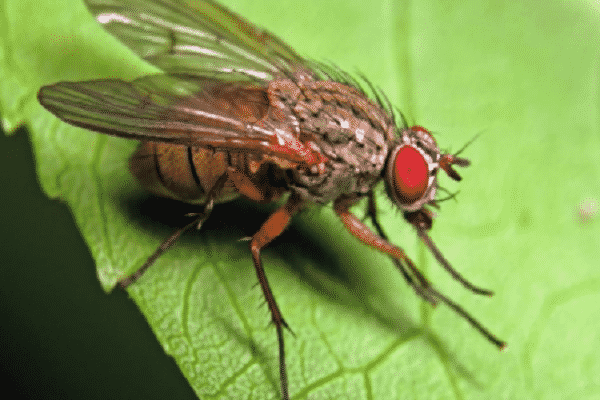
Beet bug
The beet bug is a pest of table and sugar beet. This beetle is brown or green in color and reaches a length of 7 mm. He feeds on leaves and sprouts of vegetable crops. The yellow-green larvae that hatch from 200 eggs laid by the female eat the flesh of the tops. The fight against them is carried out with the help of Dinadim and Fufanon, greens are sprayed with solutions.
It is also necessary to treat with preparations the autumn clutches of eggs, which are resistant to cold weather and can overwinter in the soil, being reborn in the spring into adults.

Miner mole
Holes on the leaves of the beet plant are also left by the mining moth - an insect 6-7 mm long, reaching a wingspan of 14 mm. This brown butterfly is dangerous because during the warm season 4 generations of caterpillars appear from its eggs. May and June larvae feed on tops, which turn black and dry out. The other two generations penetrate the root crop and gnaw holes in it.
They fight moths with the same means as with bedbugs. The cut tops after harvesting are not left in the area where they grew.

Phomosis and cercosporosis of root crops
Haze is not only harmed by insects.Plants are affected by cercosporosis and phomosis - diseases that appear due to weak seeds, bad weather conditions, contaminated soil and improper planting care. With phoma, a fungal disease, rounded yellow spots or dry heart-shaped rot are formed on the lower leaves. Cercosporosis of beet manifests itself on the tops of adult plants as brown spots with a red border up to 4 mm in diameter. The damaged leaves curl up, and fresh ones begin to grow instead. Root crops of diseased crops are small and are less well stored.
To protect the plants, plant the beds only with pickled seeds of disease-resistant varieties. Complex fertilizers should be applied to the soil for crops. For the prevention of diseases, it is necessary to water the tops with preparations containing copper. During the growing season, you need to thin out the plants, removing the weakest of them and damaged leaves. Root crops should be weeded in a timely manner, because fungal spores can get on the beets from the weeds.
